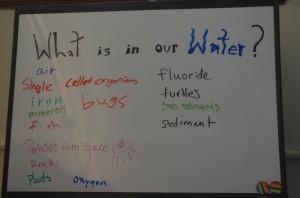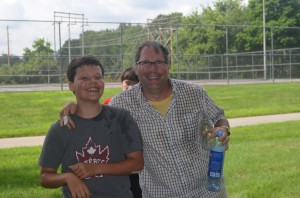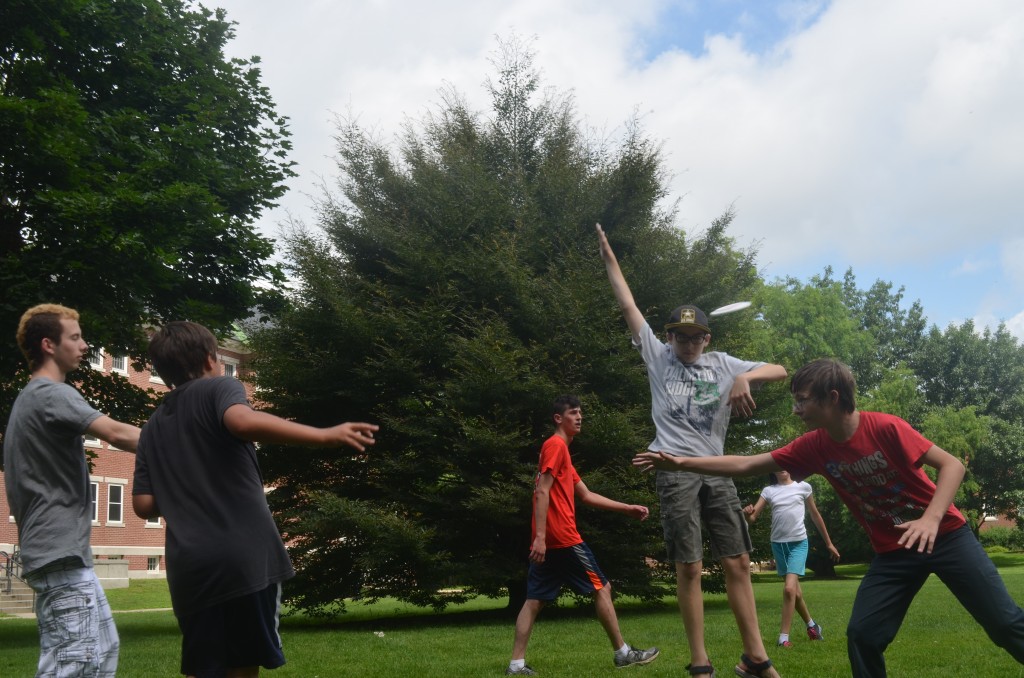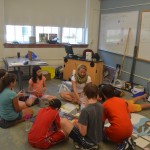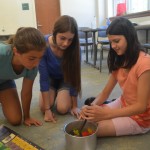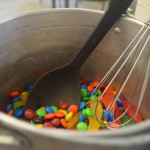Happy summer everyone!
As it is nearing the end of July, (time is rushing by!), and we are all busy working and playing, I would like to share with you a camp that was a combination of work and play for me down in Keene, NH.
I worked with Doug Earick to develop a curriculum for a science camp for middleschoolers. I lead the Splash! Into Science kids camp at Keene State University from July 14th-18th with Steve Hale as a helpful guide. The camp was overflowing with fun water games and learning activities. We spent the week trying to develop answers to the question, “What’s in the Water?”
The first task of ours was to create our own rules and contract:
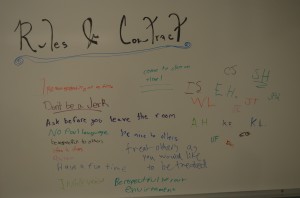 …With these self-made rules and thoughts of respect, we went on to start our week of water fun!
…With these self-made rules and thoughts of respect, we went on to start our week of water fun!
This picture is one of the very first activities the kids did to answer the question of the week…
Aside from our overarching question, there were additional questions pondered…
“What types of equipment does a hydrologist use?”
“What is data?”
“What is stream discharge?”
“What is water conductivity?”
We went down to the river to talk about what may be in the water…
And while we examined the river and searched for what may be in the water, low and behold, there was not one, but two shopping carts in the river!
We had fun playing drip, drip, drop outside
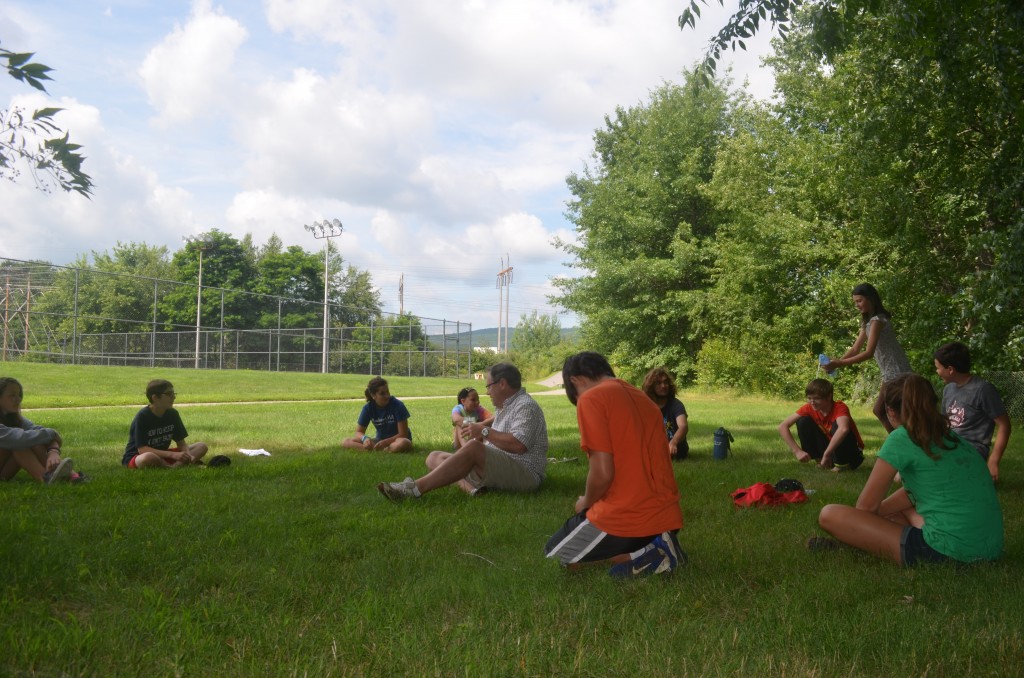 …And Will drenched Steve in the final round.
…And Will drenched Steve in the final round.
We played ultimate Frisbee, and connected it to water with how much we sweat when we played 😉 as well as the need for water bottles, and one camper even noted,
“It’s like the teams are waste particles in the water, and the other team is trying to stop the particles from flowing through.”
We made discharge measurements and calculations, where we timed tennis balls and grape fruits as they floated down the river.
We made, the colorful and charged “Ion Soup”
The m&m’s represented different elements which when stirred together, changed the make up of the conductivity of water.
By the end of the week, when asked the question, “What’s in the water?”, in addition to shopping carts and grape fruits, the kids also wrote in their journals about how you could find metals, animal waste, bugs, fish, animals, trash, dirt, sediments, a slew of elements such as iron, copper, zinc, fluoride, phosphorous, and wrote about conductivity and positively and negatively charged particles.
Below is the last journal entry from one of the student’s, answering our question of the week, “What’s in the water?”
“Our water is full of deposited things. Some that may have been man-made or natural, with positive and negative charges which make up the conductivity of the water. The rocks and minerals give us some minerals we need. Shopping carts are also found in some places.
 I will leave you with this joke from a good CFE friend,
I will leave you with this joke from a good CFE friend,
“What did the sea say to the shore?”
…”Nothing, it just waved.” 🙂
Have a great rest of your summer! And feel free to chat with me at any time about camp, or anything else water related or not!
Jes

